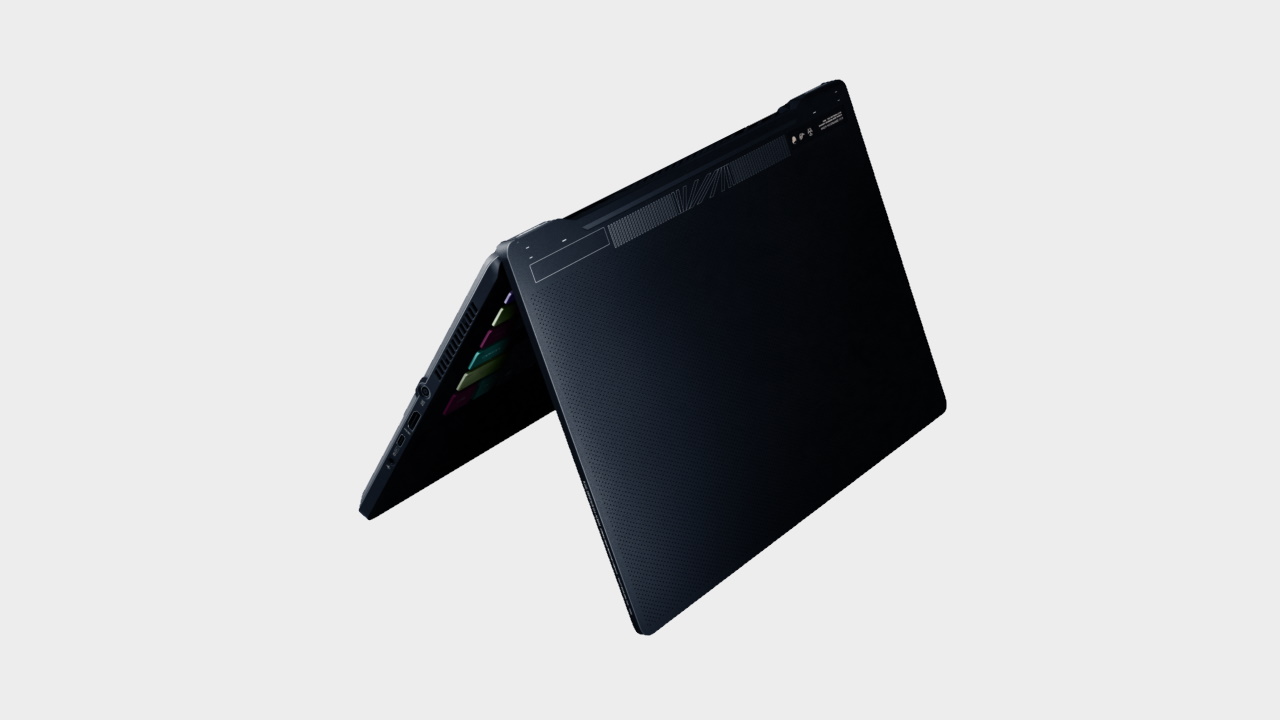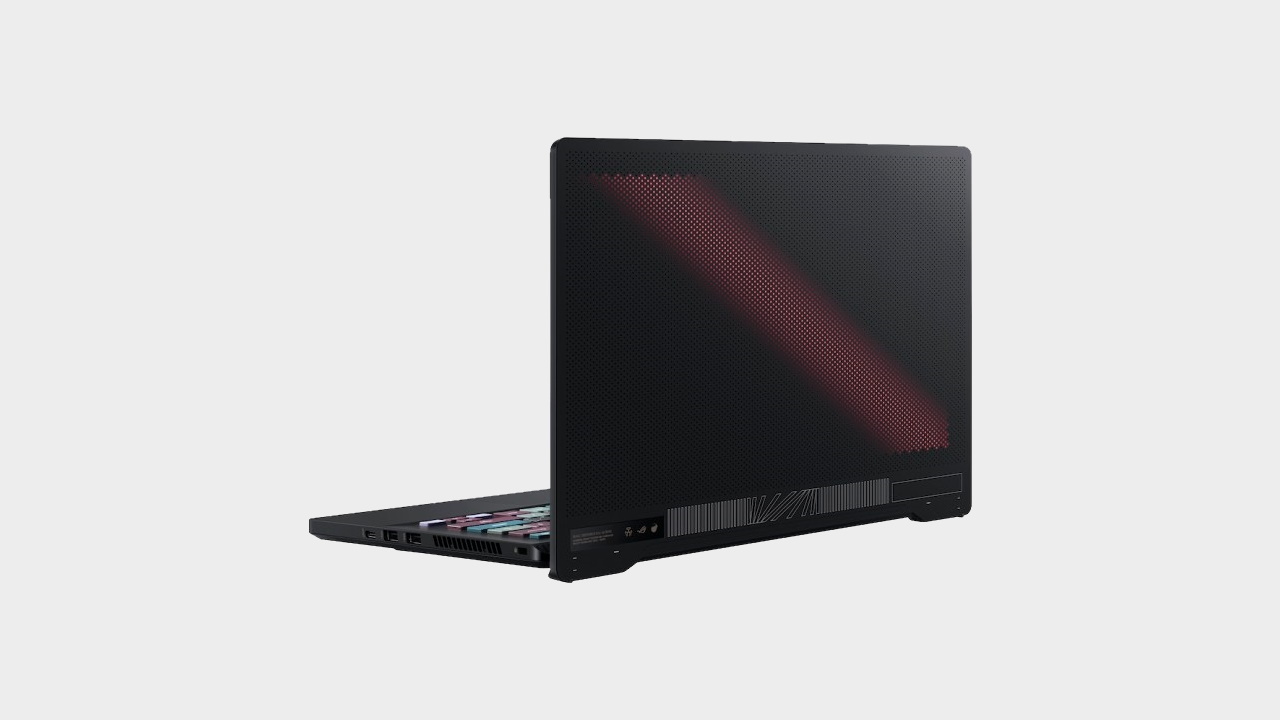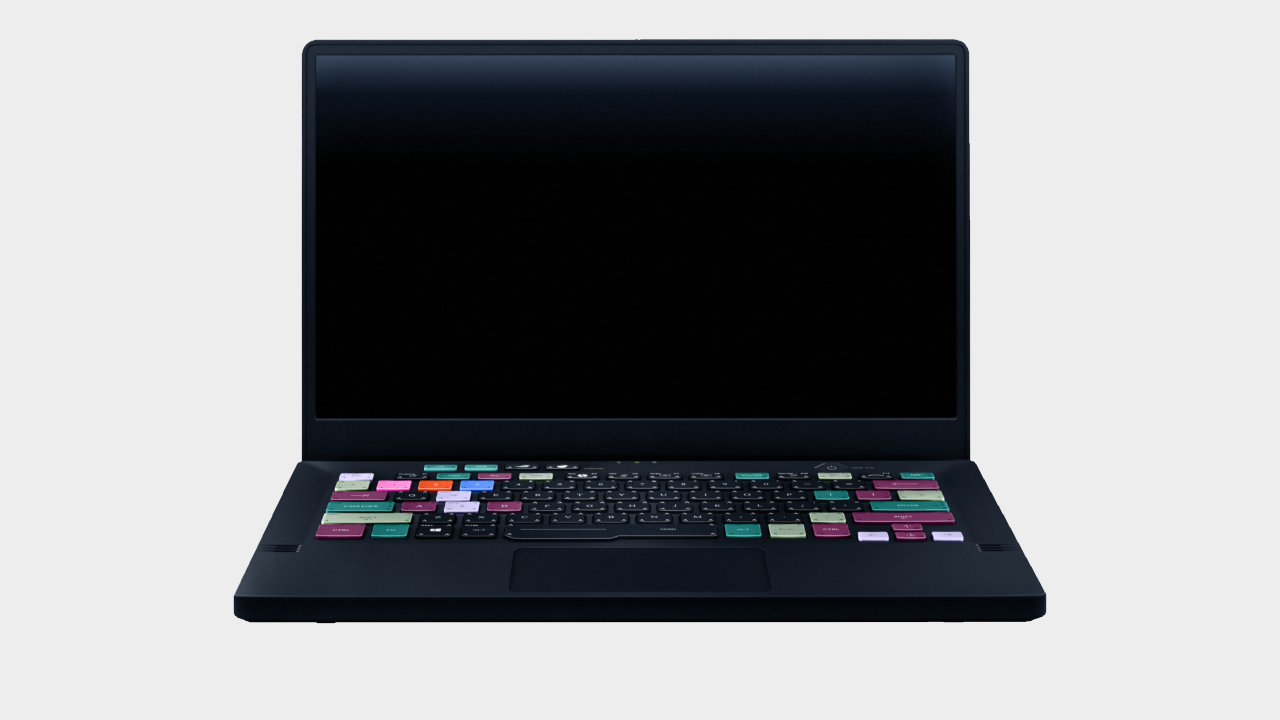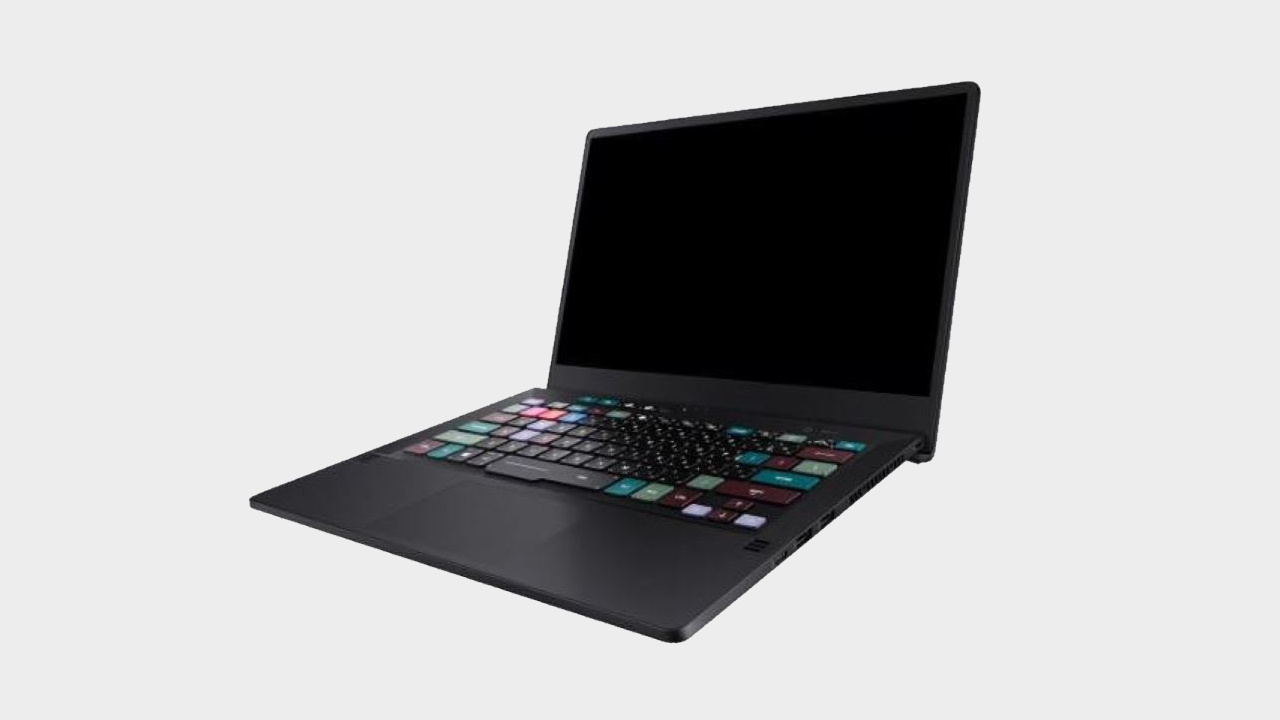GamesRadar+ Verdict
A unique design that blends a playful chaos with subtle sophistication - all plastered on a powerhouse of a machine with an incredibly light footprint.
Pros
- +
Lightweight and super slim
- +
Excellent power under the hood
- +
Tactile but smooth experience
Cons
- -
Design takes a bit of getting used to
- -
Loud fans
Why you can trust GamesRadar+
We know by now that the ASUS Zephyrus G14 is a gaming laptop to contend with - it's already on our best gaming laptop guide and it offers incredible power with all the benefits of effortless portability and the tactile satisfaction of a supremely well-engineered trackpad and keyboard. However, ACRNM's new edition of the ASUS laptop has turned the design on its head, and while it's not for everybody, there's a certain sophistication born from this fun chaos.
Design
Processor: AMD Ryzen 9 4900HS
Graphics: NVIDIA GeForce RTX 2060 Max-Q
Memory: 32GB DDR4 3200MHz RAM
Display: 14-inch, 60Hz, 1ms
Resolution: 2560 x 1440
Storage: 1TB PCIe NVMe M.2 SSD
Ports: 1x USB 3.2 Gen 2 Type-C; 2x USB 3.2 Gen 1 Type-A; 1x Type C USB 3.2 Gen 2 with Power Delivery, Display Port and G-Sync; 1 x HDMI 2.0b
Connectivity: Gig+ Wi-Fi 6 (802.11ax)
OS: Windows 10 Home 64-bit
Weight: 3.74 pounds (1.69kg)
It's impossible to ignore one of the biggest design changes to hit the ASUS G14 with this latest edition. Sure, you'll usually find loud colors in a gaming keyboard, with RGBs and customizable patterns always vying for your attention - but the ACRNM design is less about garish color for color's sake, and offers a more subtle twist on that need for a few hues other than black or silver.
It seems that gaming laptops either take that cold monochromatic aesthetic or one that blinds its users with more LEDs than keys. With muted hues of blue, green, brown, and red seemingly placed at random in this ASUS G14 keyboard, however, this feels like an almost tongue-in-cheek response to such gaudy traditions.
It's certainly not to everybody's taste and takes some getting used to the first time out of the box. However, after a while, you'll find a particular charm to its bizarre, esoteric design, and it'll certainly resonate with the creatives and 'thinkers' that the laptop has in mind.
The is variant of the G14 also sports an unusual LED display along the top of the chassis. In fact, the entire front panel of the laptop is adorned with customizable lights that can be configured in a wide range of patterns. The inside may not look like your traditional gaming laptop, but anyone looking at you face on will know you're loading up Red Dead Redemption - don't worry about that.

Then we get to the build of the chassis itself. It's easy to wonder if a 14-inch gaming laptop can really offer a powerful gaming experience - especially one worth over $2,000 / £2,000. In reality, the G-14 offers an incredibly light design that looks to change the reputation that massive, clunky gaming laptops have set as precedent - we're looking at you Alienware.
A minimal footprint and impossibly thin profile mean you can easily drop this laptop into any backpack, and the gorgeous WHQD display stretches across as much of that dinky chassis as possible.
Features
The ASUS ROG-Zephyrus G-14 has its fair share of bonus features both under the hood and embedded into the design itself. First and foremost there's that customizable LED panel on the top of the chassis. Over 1,000 mini-LEDs can be configured from proprietary software to display whatever you'd like along the top of your machine. It's a new direction in personalization that adds just one more layer of control and an excellent little bonus feature on top of an excellent machine.
However, perhaps more noticeable is the unique hinge design that slightly raises the body of the laptop when the lid is opened. It's cool to see, but it also serves a neat purpose too. Vents along the top of the chassis are left to breathe a little easier, which is a blessing because this machine is working pretty hard.
Fan control allows you to prioritise performance if you don't mind the roaring of your laptop's cooli2ng system in the background. It is a pretty loud roar, as well, and running Ultra settings will certainly have you plugging into one of the best gaming headsets. However, while that may be a drawback for some, there is the option to prioritise silence over performance should those around you start looking too suspicious.
Then there's the display. This 1440p WQHD IPS panel really does shine - and would give many of its full-sized best gaming monitor counterparts a run for their money - with an anti-glare finish that, while looking a little dimmer in brighter lights, leaves a satisfying matte finish. However, this 1440p panel maxes out at a 60Hz refresh rate, which can feel a little slow considering the amount of cash being pumped into each purchase.
Under the hood, our unit was sporting a blinding Ryzen 9 processor, with 32GB of DDR4 RAM, a 1TB PCIe NVMe SSD, and Nvidia GeForce RTX 2060 graphics card. While it might not feature the very best graphics card, or the best CPU for gaming for example - and speaking ruthlessly - it's still a very fine set of specs, with the Ryzen processor sitting particularly pretty at this price point, even if you are only just nudging into the minimum requirements for ray-tracing gaming.

Performance
How does the ASUS ROG Zephyrus G14 fare on some industry tests?
Cinebench CPU: 4066
3DMark Fire Strike: 13,353 points
3DMark Time Spy: 5,701 points
CrystalDiskMark: 1,521MB/s read; 1,748MB/s write
Tom Clancy's The Division 2: Ultra at 1080p: 51fps; Ultra at 1440p: 36 fps; High at 1080p: 56 fps; High at 1440p: 48 fps;
Metro Exodus: Ultra at 1080p: 42 fps; Ultra at 1440p: 33 fps; High at 1080p: 53fps; High at 1440p: 40 fps
Shadow of the Tomb Raider: Highest at 1080p: 73 fps; Highest at 1440p: 49 fps; High at 1080p: 81 fps; High at 1440p: 58 fps
Total War: Three Kingdoms: Ultra at 1080p: 46 fps; Ultra at 1440p: 30 fps; High at 1080p: 67 fps; High at 1440p: 45 fps
There's some serious power packed into this tiny footprint - power that offers up impressive gameplay across a number of titles. The urban jungle of GTA 5 offered no match for the Ryzen 9 processor, and the real jungle of Shadow of the Tomb Raider was equally as smooth.
That fluidity did struggle a little under the stress of Red Dead Redemption II at Ultra settings. Tearing was a lot easier to notice, with the whistle of the passing landscapes blurring just a little too much to call it frictionless. However, it was certainly playable and Medium settings offered an experience that many other rigs could only dream of.
All of that performance does come at a slight thermal cost, however, with the compact powerhouse putting its fair share of strain on the fans. Dropping down to a silence-first game mode does drop the brightness of the screen considerably, however.

That can leave you with a slightly underwhelming display if you've started taking the brightness of the perfect setting for granted. The matte anti-glare finish can dull certain colors in more sunlit environments, but those same colors pop in a darker room. It's a small gripe when faced with the performance of this machine as a whole, but worth noting if you're going to be playing or using the laptop in brightly lit areas.
That said, there are certainly some serious guts in here - all working together to offer up a stunning result. And easily enough to match one of the best gaming PCs - the ASUS GA15, for example, which we are lucky enough to have in-house here at GR.
Overall - should you buy it?
The ASUS ROG Zephyrus G14 is an impossibly lightweight powerhouse of a gaming laptop in an incredibly unique, and slim chassis - but it's not cheap. The standard model comes in at around $1,500 / £1,500 right now, but the ACRNM special release will push that price well beyond $2,000 / £2,000. That's no small change and doesn't really leave much budget for a best gaming mouse, or best gaming keyboard, for example, but if you're looking for an incredibly light machine that will plow through the latest titles on some impressive specs and look damn good while doing so, it's worth saving for this one.

Managing Editor of Hardware at GamesRadar+, I originally landed in hardware at our sister site TechRadar before moving over to GamesRadar. In between, I've written for Tom’s Guide, Wireframe, The Indie Game Website and That Video Game Blog, covering everything from the PS5 launch to the Apple Pencil. Now, i'm focused on Nintendo Switch, gaming laptops (and the keyboards, headsets and mice that come with them), PS5, and trying to find the perfect projector.



